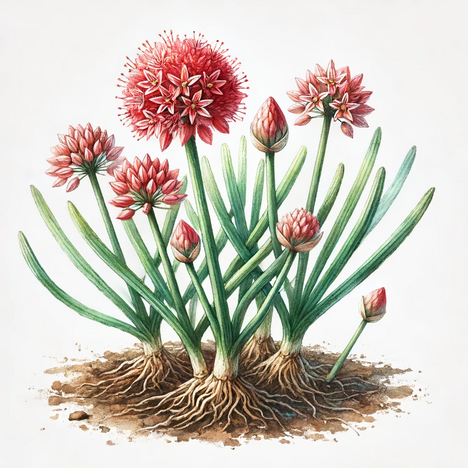Scadoxus multiflorus

When it comes to designing our gardens, we often look for plants that captivate us with their beauty and uniqueness. Scadoxus multiflorus, also known as bloodflower or fireball lily, is one such plant that attracts attention with its bright colors and impressive inflorescences. But for dog owners, the presence of this exotic beauty in the garden holds both fascination and potential dangers. In this article, we explore what makes Scadoxus multiflorus special and how its presence can affect dogs.
What is Scadoxus multiflorus?
Scadoxusmultiflorus belongs to the Amaryllidaceae family and is native to Africa. The plant is best known for its spectacular flowers, which consist of numerous small flowers in a spherical arrangement and sit on a long stalk. The bright red to orange flowers make it an eye-catcher in any garden. Scadoxus multiflorus thrives best in semi-shady areas and requires well-drained soil and regular watering without encouraging waterlogging.
The beauty and the beast: Advantages and disadvantages for dogs
The presence of Scadoxus multiflorus in the garden has both advantages and disadvantages, especially when dogs are involved.
Advantages:
- Aesthetic enhancement: without a doubt, the plant is a visual enhancement to any garden and can also create an interesting environment for dogs by arousing curiosity and stimulating the senses.
- Natural pest controller: Some plants, including Scadoxus multiflorus, can be natural pest controllers by keeping certain insect species away from other garden plants.
Disadvantages and risks:
- Toxicity: Scadoxus multiflorus is poisonous to dogs. The plant contains alkaloids which, if ingested, can lead to symptoms such as nausea, vomiting, diarrhea, lethargy and, in severe cases, convulsions and kidney failure.
- Risk of injury: The plant can also cause physical injury during boisterous play due to its stiff stem and sometimes sharp leaf edges.
Measures for dog owners
Dog owners who do not want to miss out on the beauty of Scadoxus multiflorus in their garden should take the following precautions:
- Site selection: Plant Scadoxus multiflorus in areas that are inaccessible to dogs to prevent direct contact or accidental ingestion.
- Education and training: Work on training your dog not to nibble or eat plants. This can be achieved through early training and constant monitoring.
- Regular monitoring: Watch your dog for signs of discomfort or intoxication, especially if he tends to chew on plants.
Enjoy beauty with care
Scadoxus multiflorus is undoubtedly an asset to the garden, attracting a lot of attention with its spectacular flowering. For dog owners, however, it is important to balance the beauty of the plant with the safety of their four-legged friends. Careful planning and precautions can minimize the risk of poisoning or injury, ensuring both the beauty of the plant and the well-being of the dog. Ultimately, owner awareness and proactivity is the key to keeping dogs safe in a Scadoxus multiflorus garden.
If you notice any signs of hypersensitivity or poisoning in your dog, you should see your vet immediately. We are not a substitute for a vet, but we try to be as accurate as possible. Every dog reacts differently and we recommend you get a second opinion or consult your vet if in doubt.
Stay healthy and take good care of your four-legged friend!😊